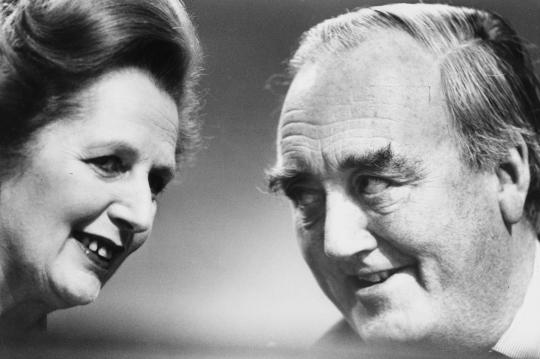#william whitelaw
Explore tagged Tumblr posts
Text




“Saddlin’ up and it’ll be ride camel rideee”
110 notes
·
View notes
Text
#umich hockey#umich boys#tyler duke#william whitelaw#nick moldenhauer#luca fantilli#michael hage#josh orrico#dakoda rhéaume mullen#dakoda rheaume mullen#dakoda rhéaume-mullen#dakoda rheaume-mullen#hockey
24 notes
·
View notes
Text
#umich hockey#jacob truscott#nick moldenhauer#philippe lapointe#william whitelaw#michael hage#jackson hallum#logan stein#garrett schifsky#josh eernisse#josh orrico#videos
19 notes
·
View notes
Text
The Invisible Man!
#spitting image#lolitics#political satire#uk politics#tom king#nigel lawson#peter walker#norman fowler#michael heseltine#geoffrey howe#leon brittan#william whitelaw#margaret thatcher#conservative party#the invisible man#parody#unemployment
10 notes
·
View notes
Text









Anyways so I had a dream and Matt rempe was like changing personalities it was weird
#nhl#umich boys#umich hockey#hockey memes#hockey#hockey boys#umich#umich wolverines#soup’s stuff#team 103#nick moldenhauer#Cameron korpi#Tim Lovell#William whitelaw#Tyler duke#luca fantilli#Evan Werner#jackson hallum#Josh eernisse
13 notes
·
View notes
Text








This is the finest that they’ve looked yet.
#quinn finley#zach schulz#joe palodichuk#william gramme#charlie stramel#cruz lucius#william whitelaw#owen mehlenbacher#daniel laatsch#sawyer scholl#tyson dyck#mathieu de st. phalle#christian fitzgerald#mike vorlicky#carson bantle#simon tassy#hockeyboys#hockey men#hockeyhusbands#uwbadgershockey
2 notes
·
View notes
Note
anything on william whitelaw
I don’t have anything as of right now!
0 notes
Link
British politician William Whitelaw was created Viscount Whitelaw in 1929, serving as Chief Whip of the Conservative Party from 1918 to 1924 and as Chairman of the House of Commons Committee of Selection from 1924 to 1930.
Link: William Whitelaw, 1st Viscount Whitelaw
#William Whitelaw#1st Viscount Whitelaw#birthday#born today#famous birthday#famous birthdays#1918#June28
0 notes
Text
Short Sharp Shock - nightmare prison regime
Short Sharp Shock was a military-style prison regime for young offenders that wrecked lives and didn't work as Tony McMahon discovers
One of the first measures introduced by the new Conservative government of Margaret Thatcher in 1979 was the so-called ‘short, sharp, shock’ policy for young offenders. A regime of strict military-style discipline and strenuous physical activity designed to remove criminality from a youth’s character and wipe the smile off their face. It was also described as red meat for the blue rinses – a…

View On WordPress
#1979#80s#detention centre#Douglas Hurd#Jamie Bulger#politics#Send#short sharp shock#Thatcher#William Whitelaw#youth offending
0 notes
Text







Payroll (I Promised to Pay) (1961) Sidney Hayers
October 5th 2024
#payroll#i promised to pay#1961#sidney hayers#michael craig#billie whitelaw#Françoise Prévost#william lucas#tom bell#kenneth griffith#barry keegan#william dexter#joan rice#glyn houston#edward cast#andrew faulds
3 notes
·
View notes
Text
— The New York City Institute



The New York City institute, built in the early 16th century under the consulship of William Aldertree, is one of the oldest institutes in the Americas as well as on of the largest in the world. While the primary focus of the institute is to protect mundanes and enforce Covenant law within the city, it also provides additional support to the Greater New York area when needed. As of 2012 it is the base of operations for the Clave in Exile, headed by Consul Alexander Lightwood.
— Notable Features



The Greenhouse: A later addition to the institute, the greenhouse was added in the early 20th century by then head of institute Clyde Graymark and his wife Florence- who had an interest in experimenting with herbal medicine. It now boasts a variety of plants of both magical and mundane origins, including wolfsbane, midnight flowers, angels trumpet, and moonflower.



The Library: An original feature from the 1500s, the institute library holds over 5,000 books in its towering shelves ranging from historical texts, to magical grimoires, to classic fiction novels. In addition to this collection the library also acts as a miniature museum containing various magical artifacts.
— Staff & Residents
Heads of Institute: Jace Herondale & Clary Fairchild
Staff & Resident: Beatrice Mendoza (tutor), Simon Lovelace, Isabelle Lightwood, Maryse Lightwood
Former Heads of Institute: Robert & Maryse Lightwood, Marian Whitelaw, Edgar Graymark
Former Staff & Residents: Alec Lightwood, Max Lightwood, Hodge Starkweather (tutor), Adam Whitelaw, Rachel Whitelaw, Edith (mundane housekeeper)
#shadowhunters#the shadowhunter chronicles#the mortal instruments#the infernal devices#the dark artifices#the last hours
70 notes
·
View notes
Text



“it’s never over”
58 notes
·
View notes
Text
#umich hockey#josh eernisse#michael hage#thomas daskas#josh orrico#luca fantilli#garrett schifsky#jacob truscott#william whitelaw#ethan edwards#dakoda rhéaume mullen
2 notes
·
View notes
Text

Dame Joan Plowright
Stage and screen star who was part of a radical generation of actors responsible for establishing the National Theatre
Joan Plowright, who has died aged 95, played a central role in the historic overhaul of British theatre at the Royal Court in the late 1950s. A founder member of George Devine’s English Stage Company in 1956, she made her name as Beatie Bryant, the working-class heroine in Arnold Wesker’s Roots in 1959, and married Laurence Olivier in 1961. The union of Plowright and Olivier was symbolic of the new theatre order embracing the old glamour, as the greatest actor of the day threw in his lot with the younger generation.
Olivier had scored one of his biggest successes as Archie Rice, the dying music hall star, in John Osborne’s The Entertainer at the Court in 1957. When the play transferred to the West End and Broadway, Plowright took over from Dorothy Tutin as Jean Rice, Archie’s daughter, and their friendship ripened into an unshakeable intimacy, and marriage, that lasted until Olivier’s death in 1989.
Plowright embodied the qualities of common sense, honesty and a sort of earthy vitality that characterised her acting. She had deep brown, currant-bun eyes in a face of plump beauty and openness. Olivier always admired the self-deprecating quality in her performances, and encouraged her to develop this as a comic weapon in her armoury. As she revealed in an affecting autobiography, And That’s Not All (2001), she worried about being employed at the National Theatre as the wife of the boss when Olivier launched that institution first at Chichester in 1962 and then at the Old Vic. But her early performances, as Sonya in what many believe to be the greatest Uncle Vanya ever seen on the British stage (Michael Redgrave in the title role, Olivier as Astrov, Sybil Thorndike as the old nurse), and as George Bernard Shaw’s Saint Joan, put paid to suspicions of nepotism.
She had an intense and fiery quality, and a wonderfully melodious speaking voice that was a constant, grounded musical counterpoint to the brilliant skitterings of the NT’s star turns, Maggie Smith and Geraldine McEwan. In later years, she acquired a comforting matronliness in her film performances, though a quality of rare decency always shone through, as in her supporting role as a suspected witch in Roland Joffé’s version of The Scarlet Letter (1995) or as a trusted confidante in Franco Zeffirelli’s Callas Forever (2002).
Plowright’s father, William, was a journalist and newspaper editor from Worksop in Nottinghamshire, and her mother, Daisy (nee Burton), an enthusiastic actor from Kent. Joan, born in Brigg, Lincolnshire, was the middle of three children; her younger brother, David Plowright, became a senior executive at Granada Television and was closely involved in much of Olivier’s later television work, including Brideshead Revisited and his final King Lear.
From 1931 the family lived in Scunthorpe, where Joan attended the grammar school before joining the Laban Art of Movement Studio in Manchester and the Old Vic Theatre School in London. At the latter (from 1949) she studied with Glen Byam Shaw, Michel Saint-Denis and Devine, and this period was crucial to her development as a prominent artist in the postwar theatre, as new British writing and the European theatre of Brecht, Ionesco and Beckett fuelled an upsurge of brilliant acting among a new generation, many of them from the provinces. This crew articulated the changing face of modern society, and Plowright was in the vanguard, alongside Albert Finney, Alan Bates, Eileen Atkins, Billie Whitelaw and Robert Stephens.
Before joining Devine at the Royal Court, she appeared in Orson Welles’s bare stage, kaleidoscopic production of Moby Dick at the Duke of York’s in 1955, a show described by Kenneth Tynan as “a sustained assault on the senses which dwarfs anything London has seen since, perhaps, the Great Fire”. As Pip the cabin boy, she was the only girl in a cast that included Patrick McGoohan, Kenneth Williams, Gordon Jackson and Welles himself as Captain Ahab.
The impact of Roots at the Court, in John Dexter’s famously incisive, unsentimental production, was nearly as great as Osborne’s Look Back in Anger had been three years earlier. Beatie was in some ways a feminine, rustic counterpart (the play was set in Norfolk) to Osborne’s metropolitan antihero, Jimmy Porter, but she was also a young woman finding her voice. At the end of a blazing tirade lambasting her own family for their ignorance and conservatism, Plowright’s Beatie cried out, said Tynan, with the wonder that is cognate with one’s first sense of identity – “I’m beginning. I’m beginning!”
You could argue that no subsequent performance was ever so stirring, or ever so influential. But at the National she made a great impact even when she shared a role, Hilde Wangel, with Smith, in The Master Builder, and then as Masha in Three Sisters and Rosaline in Love’s Labour’s Lost.
Her finest NT performances following the opening season were as Portia in Jonathan Miller’s brilliant 19th-century production in 1970 of The Merchant of Venice and, in the following year, opposite a candescent Anthony Hopkins, in John Dexter’s stark and scrupulous revival of Thomas Heywood’s A Woman Killed With Kindness. In the first, she gave full rein to her capacity for wit, irony and a scathing sense of justice; in the second, she boiled with fallibility and indignation as the unfaithful Anne Frankford.
When Olivier gave way to Peter Hall at the National, she sidestepped with some dignity all rumours that she might have wanted to succeed her husband, and her memoirs give a lucid account of the jostling that took place between the factions. She worked with her “beloved” Zeffirelli for the first time on the smash hit Saturday Sunday Monday by Eduardo de Filippo at the Old Vic in 1974 (transferring to the Queen’s theatre) and repeated her success with the same author’s equally popular Filumena at the Lyric in 1977.
In between those hits, in 1974, she joined Lindsay Anderson’s newly formed West End company to play Arkadina in The Seagull and the sexually awakened Alma in Ben Travers’s jaunty but tiresomely scatological The Bed Before Yesterday. There followed modest successes as Nurse Edith Cavell at Chichester in 1982 and an imposing Ranevskaya in The Cherry Orchard at the Haymarket in 1983, with an all-star cast but, alas, an unfinished set on a disastrous opening night. Plowright recalled how the abandoned old retainer Firs (played by Bernard Miles) wailed disconsolately that everyone had left and locked him in while rattling the handle of a door that swung invitingly open and rendered the last moments of the play quite meaningless.
By now she was happily reconciled to the older roles, joyfully seizing on Lady Wishfort, “the old peeled wall”, in The Way of the World (Chichester, 1984), with Smith as a definitive Millamant, directed by William Gaskill. In Núria Espert’s glorious 1986 production of Lorca’s House of Bernarda Alba at the Lyric Hammersmith, as a sleeve-rolling old maid, Plowright suggested “a lifetime of drudgery in the folding of linen”, said Michael Billington. Both shows sailed triumphantly into the West End.
After Olivier’s death, she gathered her family around her in a sombre revival of JB Priestley’s Time and the Conways at the Old Vic in 1990. Both daughters, Tamsin and Julie-Kate, were in the cast, as well as her son-in-law, Simon Dutton, and her son, Richard, directed. Her last notable West End appearance was a great one as the fraught mother-in-law, Signora Frola, in Zeffirelli’s sleek 2003 revival of Pirandello’s Absolutely! (Perhaps) at Wyndhams, with a new text by Martin Sherman.
She worked mostly in films, however, from 1990, gracing two charming Italian idylls: Mike Newell’s Enchanted April (1991) and Zeffirelli’s Tea With Mussolini (1999). The latter was based on the director’s own memories of wartime, scripted by John Mortimer, and co-starred her old friends Smith and Judi Dench as well as Cher and Lily Tomlin – a regular galère of delightfully entertaining eccentrics.
Before she announced her retirement from acting in 2014, due to her failing eyesight from macular degeneration, she made several more films including Mrs Palfrey at the Claremont (2005), in which she embarks on an unlikely friendship with a young writer played by Rupert Friend, the animated movie Curious George (2006) and Anthony Hickox’s spooky horror thriller Knife Edge (2009).
She celebrated her retirement in a series of onstage anecdotal conversations in 2014 with the director Richard Digby Day – “Acting is an outlet for comedy and grief, and all the characters inside you,” she said; and, now almost totally blind, invited three fellow dames, and good friends – Dench, Smith and Atkins – to join her in an overlapping, chatty reminiscence filmed by Roger Michell for the BBC in the garden of the West Sussex home she had shared with Olivier and her young family. Feisty and funny, Nothing Like a Dame (2018) was a surprise delight.
She was made CBE in 1970 and a dame in 2004 and was particularly pleased to receive an honorary degree from Hull University, conferred in a ceremony in Lincoln Cathedral, which she had often visited as a girl.
Her first marriage, in 1953, to the actor Roger Gage, ended in divorce. She is survived by her children from her second marriage, Richard, Tamsin and Julie-Kate, four grandchildren, Troy, Wilf, Ali and Kaya, and a great-grandchild, Sophia.
🔔 Joan Ann Plowright, actor, born 28 October 1929; died 16 January 2025
Daily inspiration. Discover more photos at Just for Books…?
17 notes
·
View notes
Text
Without a doubt most embarrassing case of mixing up the names of 2 historically important people because my brain has decided that the names are just too similar that I chronically suffer from is william wickham and william whitelaw
13 notes
·
View notes
Text
#OTD in 1972 – The Official IRA announced a ceasefire. This marked the end of the Official IRA's military campaign.
The official wing of the IRA in Northern Ireland announced a ceasefire, reserving the right of self-defence against attacks by the British Army and sectarian groups. However the Provisional IRA dismissed the truce as having “little effect” on the situation. The Northern Ireland Secretary, William Whitelaw, welcomed the move and a spokesperson said it was “a step in the right direction”. A…

View On WordPress
8 notes
·
View notes